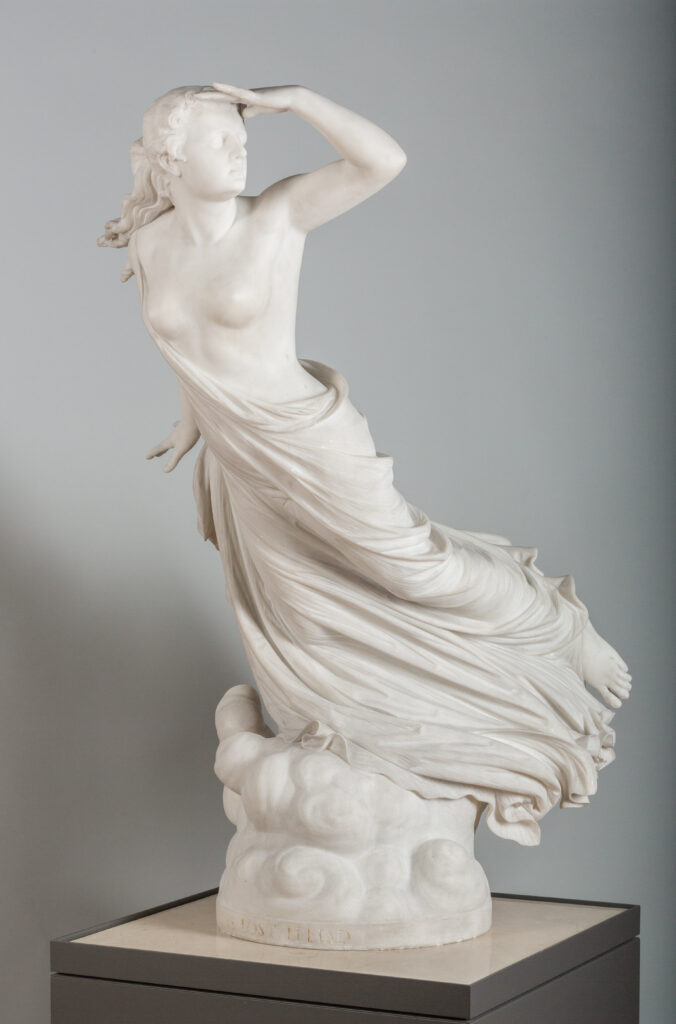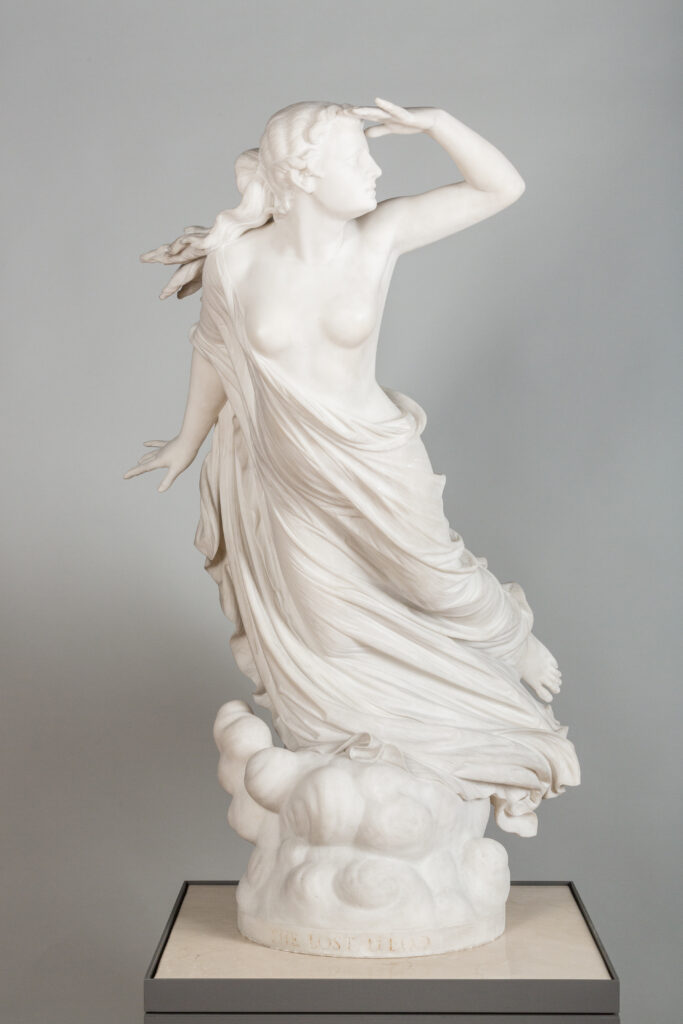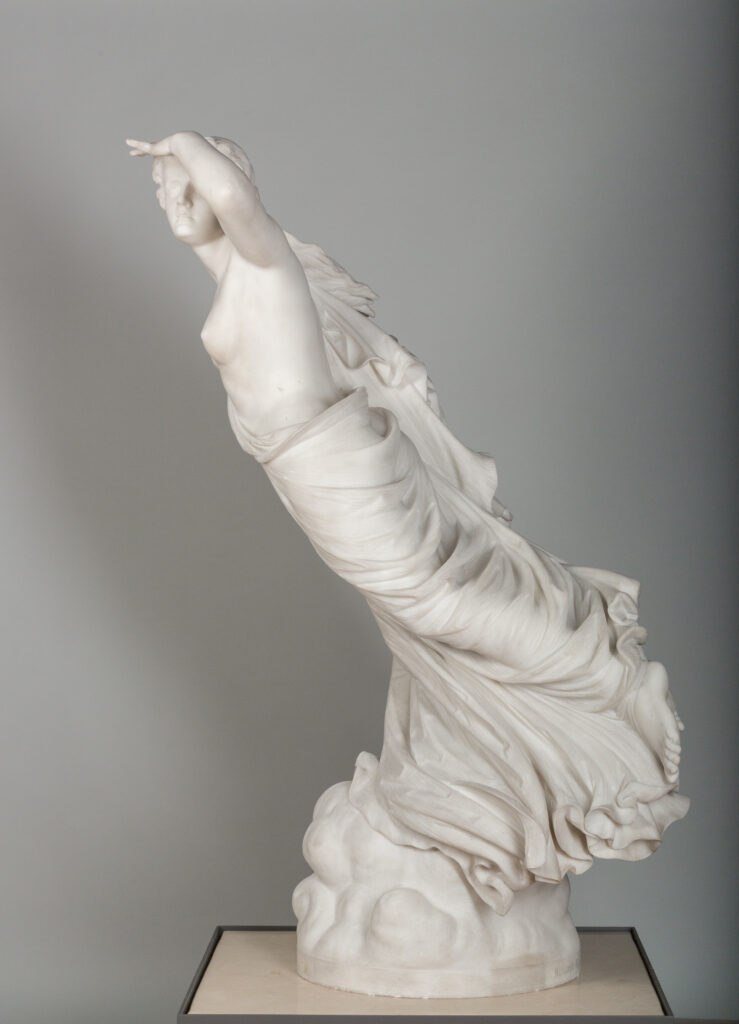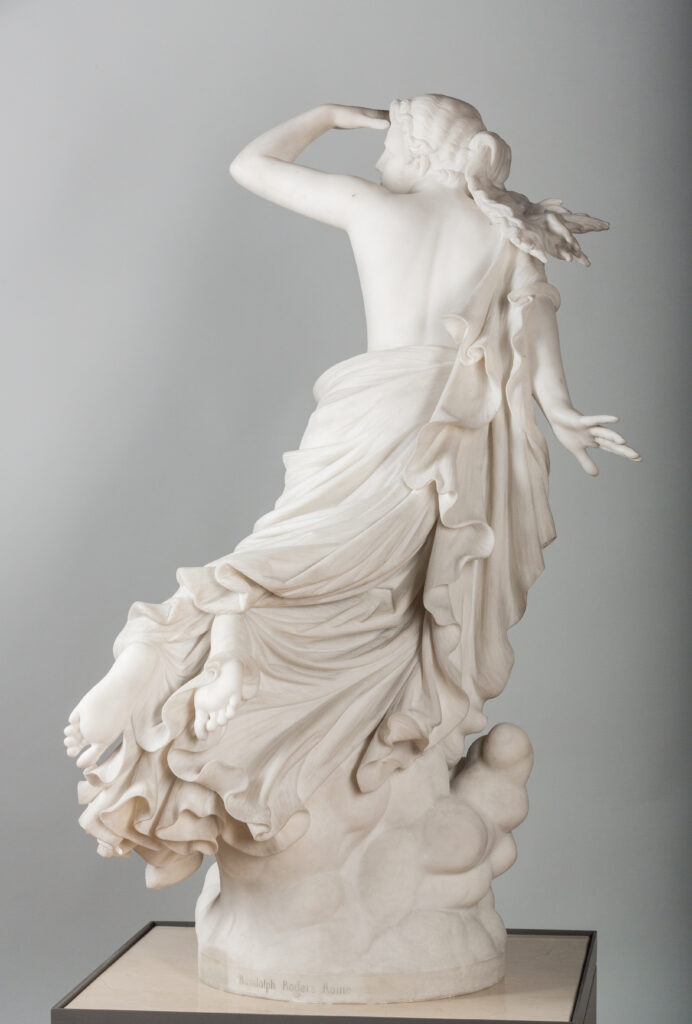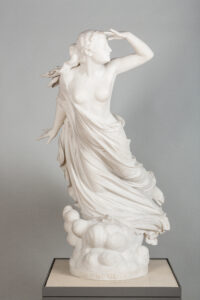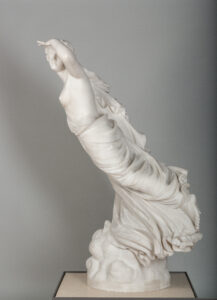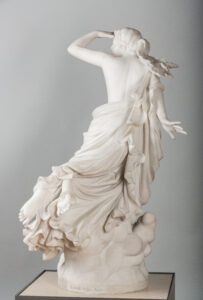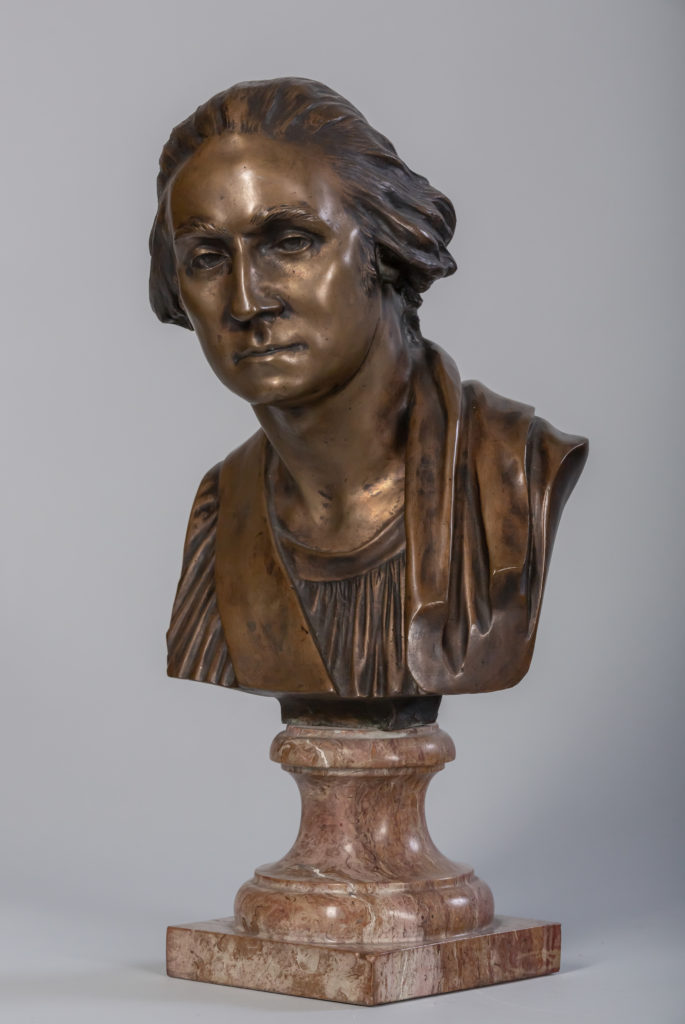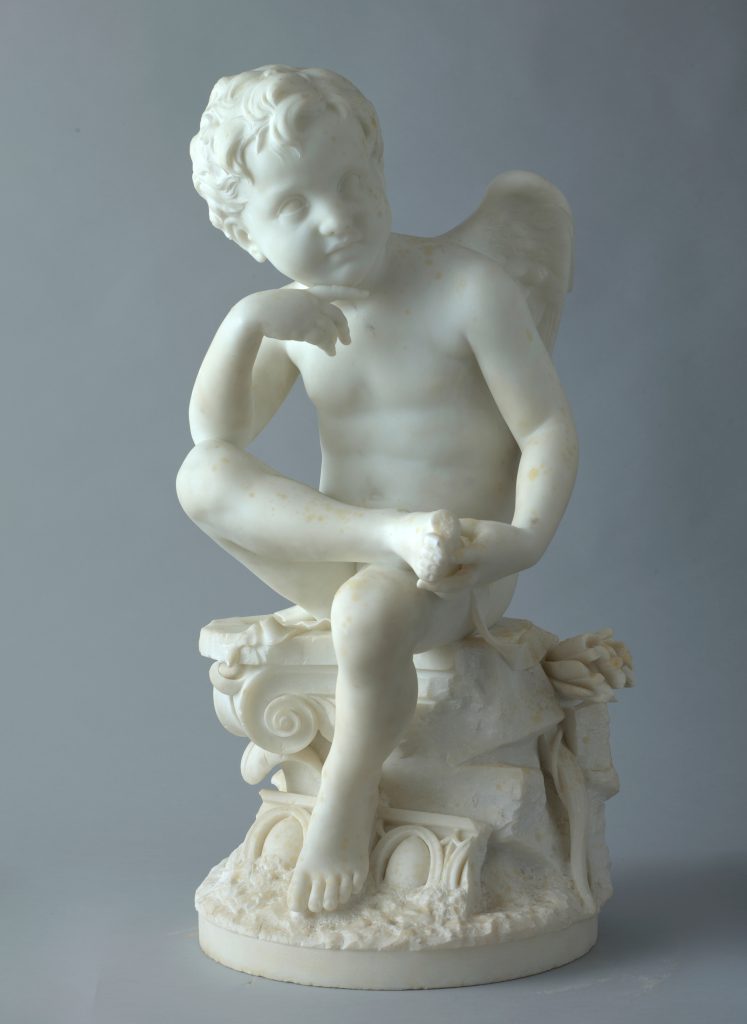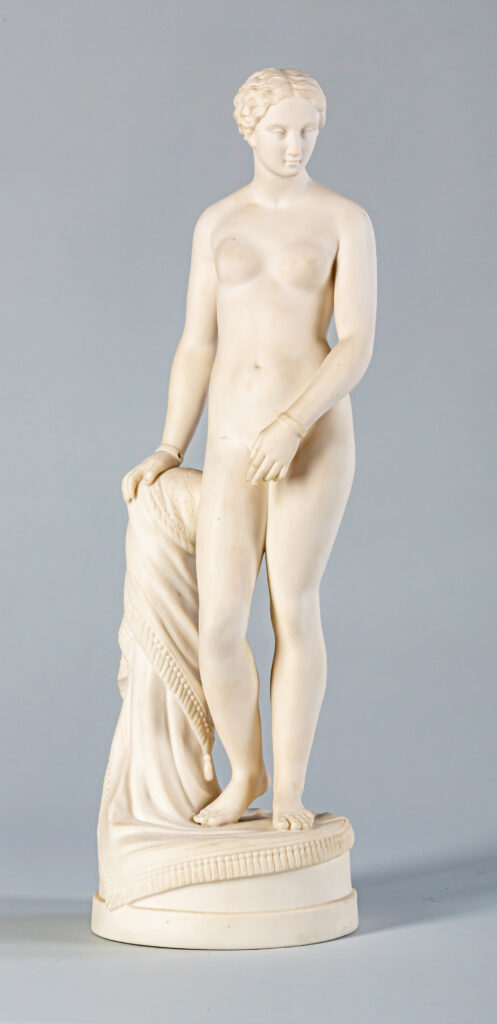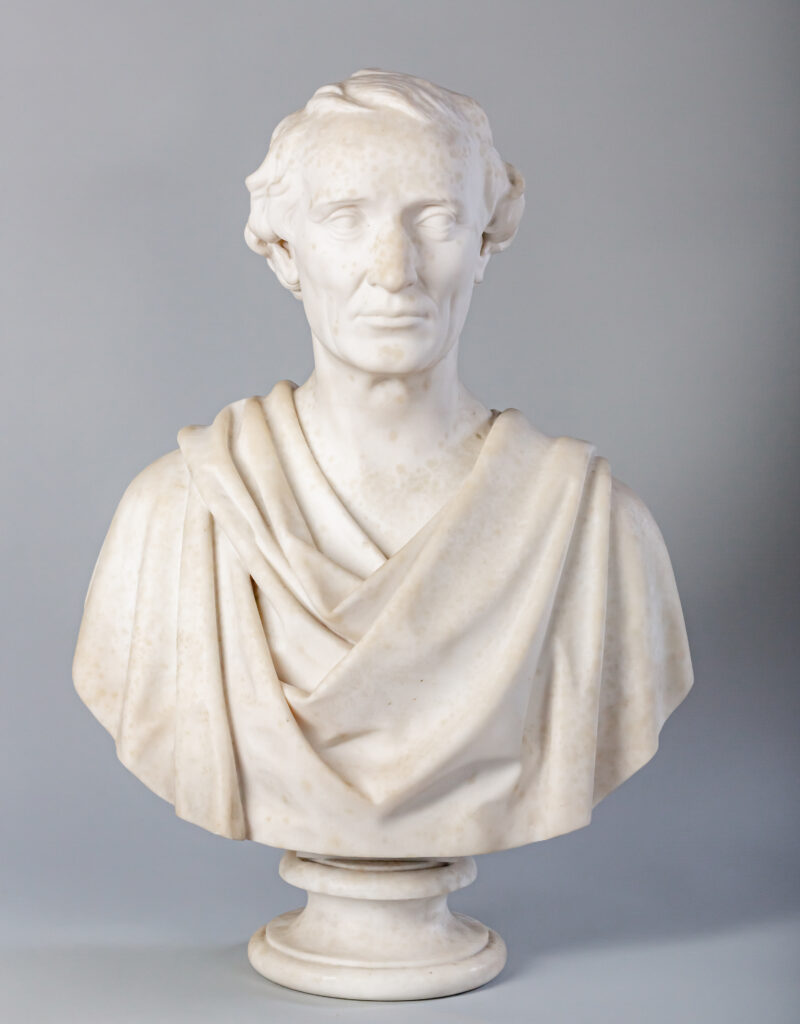The Lost Pleiad
Bequest of Mrs. Galen C. Moses
1933.9Randolph Rogers opened his studio in Rome in 1851 and from there gained acclaim among a wealthy and growing American clientele at home and abroad. The Lost Pleiad is Rogers’s last work of ideal sculpture and regarded as his final masterpiece. It is based on a myth preserved in the Fasti, a poem by the ancient Roman poet Ovid, which describes the origins of holidays marked on the Roman calendar. In the Fasti, Ovid describes how the Merope (the “lost Pleiad”) loses her place among her six sister stars in the constellation after marrying a mortal, a common trope in ancient myth. Rogers’s depiction captures Merope searching for her celestial home, indicated by the clouds gathering at her feet, and reveals the sculptor at the height of his talents.
Ovid records the legend of the lost Pleiad thus:
“When the night has passed, and the sky has just begun to blush, and dew-besprinkled birds are twittering plaintively, and the wayfarer, who all night long has waked, lays down his half-burnt torch, and the swain goes forth to his accustomed toil, the Pleiads will commence to lighten the burden that rests on their father’s shoulders; seven are they usually called, but six they usually are; whether it be that six of the sisters were embraced by gods (for they say that Sterope lay with Mars, Alcyone and fair Celaeno with Neptune, and Maia, Electra, and Taygete with Jupiter); the seventh, Merope, was married to a mortal man, to Sisyphus, and she repents of it, and from shame at the deed she alone of the sisters hides herself.”
Like many of Rogers’s works, The Lost Pleiad was wildly popular and demand for copies was high. Following the modeling and completion of the original sculpture in 1874–1875, more than one hundred copies were requested, revealing growing American taste during the early Gilded Age for neoclassical sculptures and home furnishings.
Rogers first found success with his sculpture of Nydia, the Blind Flower Girl of Pompeii (1853–1854), which was based on a central and tragic figure from the popular novel The Last Days of Pompeii (1834) by the British author Edward Bulwer-Lytton. The novel was a bestseller in America and remained a touchstone when Rogers carved his Nydia. This explains the immediate success of the figure, which was reproduced over seventy times. His fame would bring him major commissions for public monuments across the US which, to greater or lesser extent, draw on motifs, poses, and tropes developed in ancient sculpture. Surrounded by Roman ruins and ancient sculptures, Rogers’s practice of embedding echoes of the past in his art is in line with that of other earlier and contemporary American sculptors working in Rome, such as Crawford, Hiram Power, and Harriet Hosmer.
